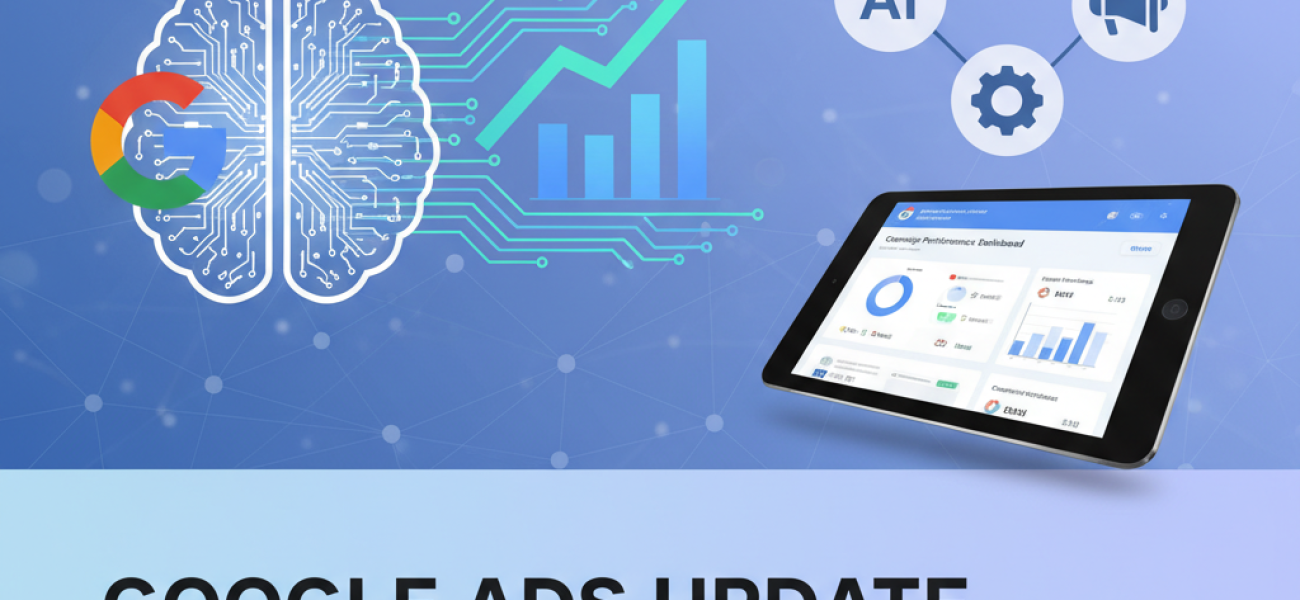The Google Ads update is significantly transforming the landscape of digital marketing by integrating advanced AI marketing capabilities and automation tools that enhance campaign performance. As advertisers strive for efficiency and precision, these innovations provide critical advantages in managing complex advertising efforts.
The Evolution of Google Ads in the Era of Automation and AI
Google Ads has continually adapted to the evolving digital marketing environment, and the latest update emphasizes automation powered by artificial intelligence. Automation in campaign management reduces manual interventions, freeing marketers to focus on strategic decisions. AI marketing enables the platform to optimize bids, keywords, and ad creatives based on comprehensive data analysis beyond human capacity.
Marketers who embrace these AI-driven changes gain early access to features that automatically identify high-performing keywords and adjust landing pages dynamically. This level of integration reflects a shift from traditional keyword-centric approaches to a more holistic, user-intent-focused system.
“As a PPC practitioner for over two decades, witnessing AI Max’s ability to analyze keywords, landing pages, and ad assets from the beginning is revolutionary,” remarked Nikki Kuhlman, Vice President of Search at JumpFly, Inc.
Enhancing Campaign Performance Through AI-Driven Insights
The update includes sophisticated algorithms that process vast amounts of data in real time to adjust campaign parameters. By continuously learning from user interactions, AI improves targeting, budget allocation, and ad placement. This dynamic approach increases conversions while reducing wasted spend, a critical concern for digital marketing professionals.
For example, AI optimization may reveal insights about audience segments previously unnoticed, allowing campaign managers to refine messaging and offers accordingly. Early adopters report measurable gains in return on ad spend (ROAS) following these optimizations.
Real-Time Alerts and Slack Integration
One valuable feature is the integration of Slack alerts with Google Ads performance monitoring. Timely notifications about campaign changes, budget anomalies, or performance dips empower teams to react swiftly, maintaining control despite automation.
This fusion of AI with collaborative tools like Slack reinforces transparency and responsiveness, especially for agencies and in-house marketing teams managing multiple campaigns. The real-time communication ensures stakeholders remain informed, aligning with best practices in digital marketing management.
Comparing Traditional and AI-Optimized Campaigns
Traditional campaign management largely depends on manual analysis and adjustments, which can be time-consuming and prone to oversight. In contrast, AI-optimized campaigns benefit from continuous learning and automatic fine-tuning based on extensive data evaluation.
While some marketers express concerns about the loss of granular control, the efficiency and improved performance often outweigh these challenges. Agencies like Adsroid have successfully implemented these AI marketing tools to deliver superior customer outcomes.
“The integration of AI marketing tools into Google Ads empowers agencies like Adsroid to deliver faster results without sacrificing accuracy,” noted a senior digital strategist at Adsroid.
Implications for Digital Marketing Professionals
Digital marketers must adapt to these technological advancements by developing new skills that involve interpreting AI-generated insights and managing automation workflows. Training and continuous learning are essential to fully leverage the Google Ads update.
Marketers should also monitor advertising news closely to stay informed about ongoing platform updates. Resources such as Google’s official Ads blog (https://ads.google.com/blog) offer regular announcements and tutorials that facilitate smooth integration of new features.
Future Outlook: Automation and AI as Core Elements
The trajectory of digital advertising clearly leans toward broader AI integration and deeper automation. As platforms like Google Ads evolve, their role in campaign optimization will expand, enabling marketers to achieve higher efficiency and enhanced user engagement.
Marketers embracing this evolution are poised to maintain competitive advantages, while those resistant may face challenges in keeping pace with industry standards.
Conclusion
The Google Ads update marks a pivotal moment in digital marketing, introducing sophisticated AI marketing and automation capabilities that significantly improve campaign performance. Features such as Slack alerts ensure prompt communication and management agility, critical in today’s fast-paced advertising environment. Professionals who strategically integrate these tools will enhance efficiency, maximize returns, and stay ahead in an ever-changing digital landscape.
For further details on mastering these advancements, marketers can consult comprehensive guides and case studies available through digital marketing platforms and forums.

